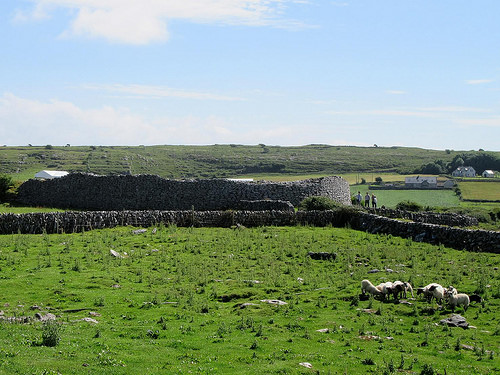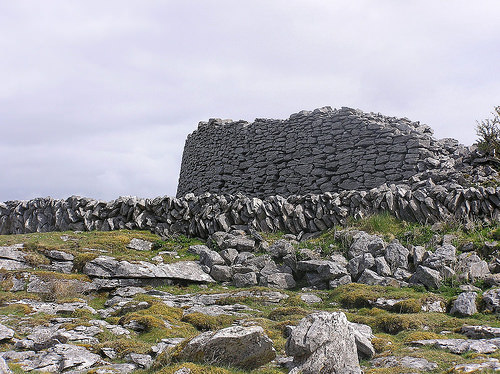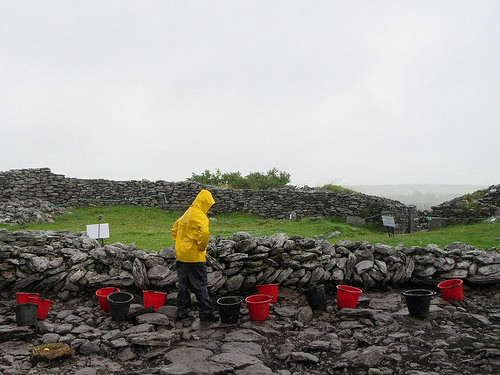“It is very important that the story of the native population is put back into the narrative of Medieval Ireland,” – Kate Leonard, supervising archaeologist.

PHOTO: Popular Archaeology

PHOTO: Popular Archaeology
CAHERCONNELL CASHEL, IRELAND – Archaeologists have found a wealth of artifacts that tell a story of the native people of ancient and medieval Ireland.
The ancient stone fort sits atop what’s called the Burren, a gorgeous section of western Irish countryside that is literally paved with natural limestone and bright green and purple heather. It’s home to sheep and cattle, and draws tourists and archaeologists alike.
Archaeologists have managed to dig up over 500 ringforts and 90 megalithic tombs, all of which come with their own host of artifacts that lend their story to the archaeological record of Ireland’s history. This year, a team of archaeologists have been excavating at the site of Caherconnell Cashel, a stone fort deep in the Burren.
The site dates back to the 10th century AD, according to the supervising archaeologist, Kate Leonard, and was occupied until the 16th century AD. The building itself was put together with no mortar, and enclosed with a four-meter-high wall made of limestone, probably quarried from the Burren itself.
They’ve found over 1200 medieval artifacts so far. It’s an immense find that paints a picture of what life was like at Caherconnell. The artifacts include bone, iron, and bronze brooches and pins; whetstones and quernstones; glass and amber beads; a silver finger ring; iron and bronze buckles; knives and other tools; a bronze tuning peg that probably belonged to a harp; iron arrowheads; and several beautifully carved bone combs.
Not only that, but they’ve also found a lot of evidence of what the people living at Caherconnell ate. The Burren is made of limestone bedrock. This limestone makes for very alkaline (non-acidic) soil, which preserves any and all bones in the area. As such, the researchers at the site have found a lot of animal remains.
Combine that with what they’ve found as far as tools and what they’ve dug up in the trash pits, and they have a very vivid picture of what ancient Irishmen ate.
“There is a large animal bone assemblage from the site that tells us the cashel’s occupants throughout the Medieval period had a varied diet including pig, sheep/goat and cow milk products and meat, fish, shellfish, domestic poultry and their eggs. The meat in their diet was supplemented with gathered herbs, fruits and nuts, like the ever present hazelnut, and cereal grains like barley, oats, rye and wheat ground by hand into flour and/or meal using heavy stone rotary querns.” – Kate Leonard
They’ve found all sorts of buildings, including a house that might have later functioned as a storage or disposal room. They found what they think is a metalworking workshop, too, judging by the remains of a furnace, metalworking hearth, and some non-industrial charcoal. They also think they might have found a kiln made to dry grains to preserve them.

PHOTO: Popular Archaeology
The site at Caherconnell has been worked on since 2007. Digging has been an easy affair, since most of the topsoil covering the site is very loose and easy to brush away. Researchers are hoping that further digging will reveal more about how the people there lived.
The story of the ancient Irish is a story often ignored in orthodox history books. Their prehistory is largely forgotten. Kate Leonard is extremely hopeful that excavations like Caherconnell Cashel will help paint a rich, beautiful picture of the day-to-day life of the native people of Ireland, since much of Irish history has been taken over by the archaeological, better-documented story of the invading Anglo-Normans of the 12th century AD.
The researchers will continue working on their site, looking for the unwritten history of the Gaelic people. Hopefully, in the future, they’ll find even more compelling evidence about how the native Irishmen lived in their day-to-day life.

